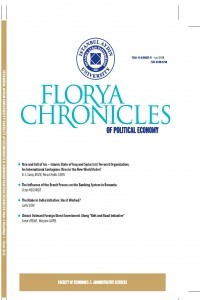Employee Benefits and Motivation: How it-Experts are Motivated and Prefer to be Rewarded
Employee Benefits and Motivation: How it-Experts are Motivated and Prefer to be Rewarded
This paper identifies the role of rewarding and recognition in employees’ motivation and work commitment in a bank’s IT-department. The ITdepartment is located in Istanbul, Turkey with total almost 400 employees and it is part of a greater organization which’s main branch is financial services and banking and it operates internationally in more than 40 countries. To identify the role of rewarding and recognition in employees’ motivation this survey was conducted in the IT-department and it was sent to 80 employees. The study intends to increase the understanding of the relationship between motivation and rewarding, especially in such business environment as information technology is. The findings show that though there is a relationship between motivation and rewarding, the relationship is not apparent and the effect is hard to be observed when measuring individual rewarding methods. Therefore this study concentrates more on general opinions about rewarding system used in the organization and how, according to employees’ prospects, it could be improved
Keywords:
Motivation, IT-departments Management,
___
- Aguinis, H. (2009). Performance Management. (2nd edition.) New Jersey, USA: Pearson Education Inc.
- Armstrong, M. (2006). A Handbook of Human Resources Management Practice. (10th edition.) London, United Kingdom: Kogan Page Limited.
- Armstrong, M. & Stephens, T. (2005). A Handbook of Employee Reward Management and Practice. (1st edition.) London, United Kingdom: Kogan Page Limited.
- Bagshawe, A. (2011). How to Improve Motivation. (1st edition.) Anthony Bagshawe & Bookboon.
- Baron, A. & Armstrong, M. (2006). Human Capital Management: Achieving Added Value Through People. (1st edition.) United Kingdom: Kogan Page Limited.
- Bowen, R. (2000). Recognizing and Rewarding Employees. (1st edition.) Quebecor, Martinsburg: The McGraw-Hill Companies.
- Cameron, J. & Pierce, W. David. (2002). Rewards and Intrinsic Motivation: Resolving the Controversy. Westport, CT, USA: Bergin & Garvey.
- Deeprose, D. (2006). How to Recognize & Reward Employees. (2nd edition.) New York, USA: American Management Association.
- Elliot, Andrew J. & Dweck, Carol S. (2005). Handbook of Competence and Motivation. New York, USA: Guilford Press.
- Epstein, M. & Manzoni, J-F. (2008). Studies in Managerial and Financial Accounting. Volume 18. Performance Measurement and Management Control: Measuring and Rewarding Performance. (1st edition.) Bingley, UK: Emerald Group Publishing Limited.
- Kouzes, J. & Posner, B. (2003). Encouraging the heart: a leader’s guide to rewarding and recognizing others. (1st edition.) San Francisco, USA: Jossey-Bass.
- Kressler, H. (2003). Motivate and Reward. (1st edition.) New York, USA: Palgrave MacMillan.
- McCoy, T. (1992). Compensation and Motivation. Maximizing Employee Performance with Behavior-Based Incentive Plans. (1st edition.) USA: AMACOM, American Management Association.
- Nelson, B. (2012). 1501 Ways to Reward Employees. (1st edition.) USA: Workman Publishing.
- Parker, G., McAdams, J. & Zielinski, D. (2000). Rewarding Teams. (1st edition.) San Francisco, USA: Jossey-Bass Inc.
- Pinder, G. (2008). Work Motivation in Organizational Behavior. (2nd edition. p.11) New York, USA: Psychology Press.
- Podmoroff, D. (2005). 365 Ways to Motivate and Reward Your Employees Every Day – With Little or No Money. USA: Atlantic Publishing Company.
- ISSN: 2149-5750
- Yayın Aralığı: Yılda 2 Sayı
- Başlangıç: 2015
- Yayıncı: İstanbul Aydın Üniversitesi
Sayıdaki Diğer Makaleler
What is Globalisation and What Is Not?
A Historical PERSPECTİVE, Turan SUBAŞAT
Economic Diversification and Policy in Azerbaijan
Sedat AYBAR, Matanat RASULOVA, Faiq QASİMLİ, Dutch DİSEASE
Exchange Rate Volatility and Trade Flows in
The Euro AREA, Zelha ALTINKAYA, Fırat BAYIR
Employee Benefits and Motivation: How it-Experts are Motivated and Prefer to be Rewarded
